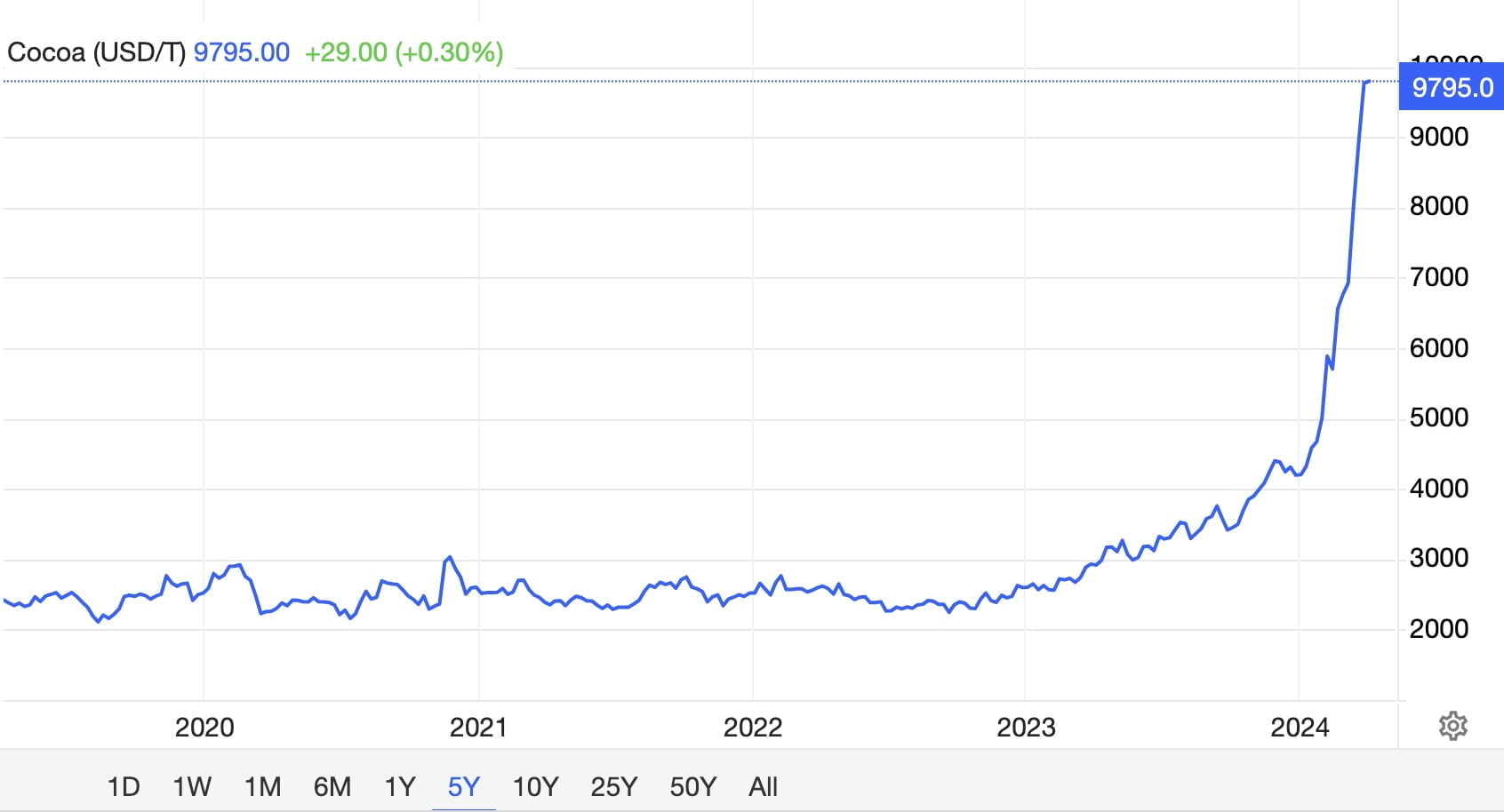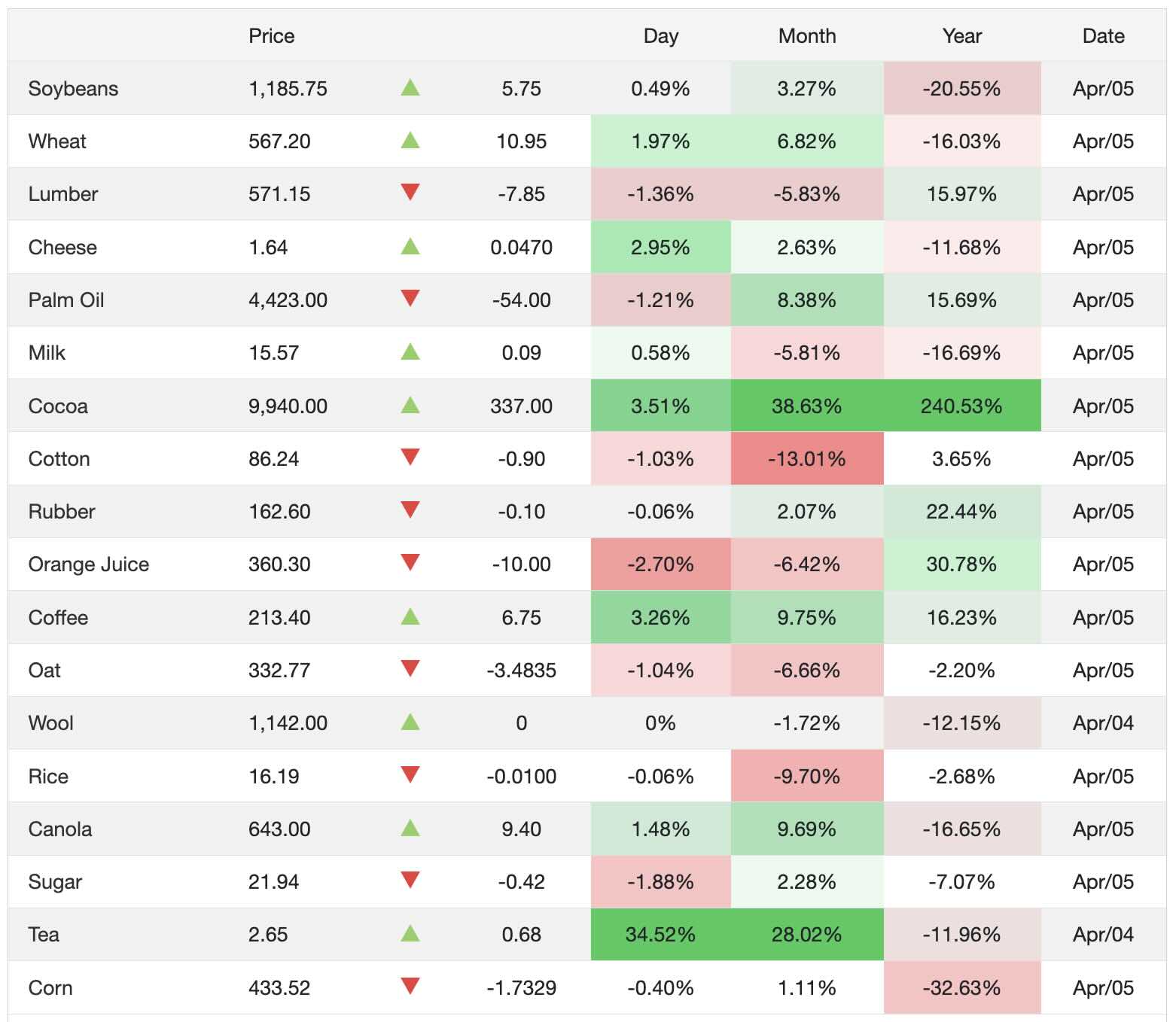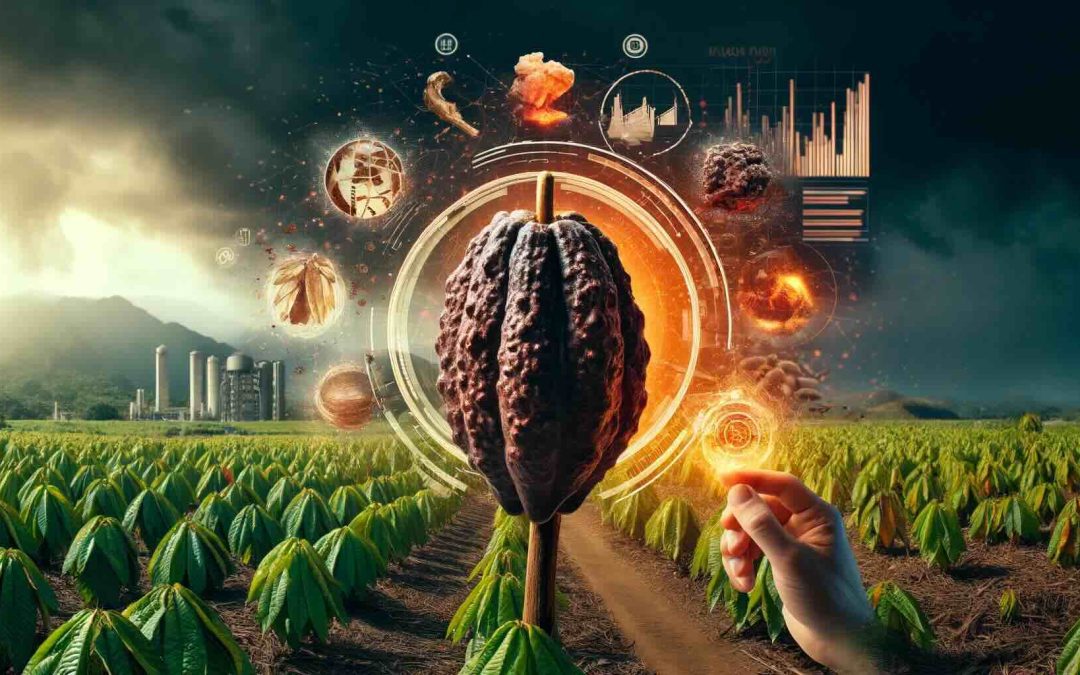The Looming Threat of Black Pod Disease: The world is grappling with a severe cocoa crisis, characterized by skyrocketing prices and severely constrained supplies. At the heart of this dire situation is the devastating impact of black pod disease. This fungal blight, caused predominantly by the oomycete Phytophthora palmivora, has been ravaging cocoa plantations across the globe, leading to significant crop losses and exacerbating the supply shortfall.
The numbers are staggering: In the world’s two largest cocoa-producing nations, Côte d’Ivoire and Ghana, which together account for over 60% of global output, the disease has been responsible for as much as a 20% reduction in production. This has contributed to a staggering global supply deficit currently estimated at around 500,000 metric tons – the largest on record.
Fueling the Crisis: Soaring Cocoa Prices
Commodity cocoa futures prices have surged to unprecedented levels, peaking at $6,884 per metric ton for the March 2024 NY contract. This represents a staggering 45% increase in prices just since the start of 2024, following a 70% jump from the already elevated levels of late 2023. In April 2024, the price per metric ton has reached a staggering $9,795, nearly $10,000 per metric ton.

Massive price increase to $9795 per ton
What is this Fatal Fungus?
Phytophthora palmivora is an oomycete, or water mold, that is a highly destructive plant pathogen. It is not actually a true fungus, but rather a fungus-like organism that is more closely related to algae.
Phytophthora palmivora is capable of infecting a wide range of plants, including important agricultural crops like cocoa, coconut, rubber, black pepper, and citrus. It can cause devastating diseases like black pod rot, bud rot, and root rot that can severely damage or even kill infected plants.
The pathogen spreads through the production of swimming spores called zoospores that can disperse through water, soil, or on infected plant material. It can also produce thick-walled resting spores called oospores that can survive in the soil for long periods, making it extremely difficult to eradicate.
Controlling Phytophthora palmivora is a major challenge for many growers. Fungicides can provide some protection, but the pathogen has developed resistance in some regions. Improving drainage, using resistant plant varieties, and destroying infected plant material are also important control measures.
Reasons for the Cocoa Crisis
The root cause of the current cocoa crisis lies in the severe supply shortages plaguing major producing regions. In Côte d’Ivoire, the world’s largest cocoa producer, government data shows that farmers shipped 1.16 million metric tons of cocoa to ports from October 1 to February 25 – a 32% decline compared to the same period the previous year.
The cocoa agricultural crisis is driven by a confluence of factors, including:
- Climate Change: Prolonged hot and dry weather conditions, as well as heavier-than-normal rainfall, have been fueled by the El Niño weather pattern. These climate impacts have created an environment that is favorable for the spread of black pod disease.
- Disease Outbreaks: The swollen shoot virus and black pod fungus have been devastating major cocoa-producing regions like Côte d’Ivoire and Ghana. Up to 20% of production in Côte d’Ivoire has been affected by the swollen shoot disease.
- Declining Productivity: Lack of investment in farm inputs, such as fertilizers, has led to a decrease in cocoa plant productivity in many regions, exacerbating the supply shortfall.
- Smuggling: The lure of higher prices in neighboring countries has resulted in significant cocoa smuggling, further reducing the official production figures in Ghana and Côte d’Ivoire.
- Environmental Regulations may play a role, too: Emerging regulations, such as the EU Deforestation-free Regulation (EUDR), are expected to constrain supply as producers struggle to meet the new sustainability requirements.
Watch this segment in the All-in-Podcast when David Friedberg presents the cocoa matter:
The Role of Cocoa in Chocolate Production
Cocoa is the critical ingredient in the production of chocolate, a beloved and widely consumed confectionery around the world. In fact, approximately 11% of a typical Hershey’s chocolate bar is made up of ground cocoa powder. Cocoa beans are harvested from the cacao tree, a plant that grows to about 10 feet tall and is predominantly cultivated in West Africa, Latin America, and Southeast Asia.
The cocoa crisis has far-reaching implications for the chocolate industry, as the skyrocketing prices of this essential raw material are forcing manufacturers to make difficult decisions. Many are being forced to raise retail prices, reduce the size of their chocolate bars, or even explore the use of alternative ingredients to offset the soaring costs of cocoa.
For comparison, we show the development of agricultural commodity prices in the chart below. Cocoa, orange juice, and rubber are the top commodities that experience price increases:

Prices in compairison (7 April 2024)
Tackling the Fungus
In the face of this daunting challenge, a multifaceted approach combining the judicious use of fungicides with sustainable farming practices and the power of AI-driven precision agriculture holds the promise of combating the black pod scourge.
The Strategic Application of Fungicides
One of the primary weapons in the arsenal against black pod disease is the strategic application of fungicides, such as metalaxyl/cuprous oxide. These proven treatments have demonstrated efficacy in controlling the spread of the Phytophthora pathogen, but their effectiveness can be significantly enhanced through proper timing and targeting.
Research has shown that reducing the number of fungicide applications while maintaining rigorous crop sanitation measures can be just as effective as more intensive spraying regimes, all while minimizing the environmental impact of these treatments. Proper application, including targeting the cocoa tree trunks, is crucial for maximizing the efficacy of fungicides in managing black pod disease.
Implementing Sustainable Practices
Beyond fungicides, sustainable farming practices are essential in the fight against black pod disease. This includes measures like:
- Improving crop sanitation by regularly pruning and removing infected pods and plant material
- Ensuring proper drainage and air circulation to reduce humidity levels that favor pathogen growth
- Strategically placing shade trees to optimize growing conditions and prevent disease spread
AI-Enabled Orchestration Strategy
By coupling the judicious use of fungicides with these sustainable practices, cocoa growers can achieve remarkable results in controlling the black pod scourge.
The Power of AI-Driven Precision Agriculture
Innovative technologies like AI-powered agronomic advisors, such as agri1.ai, can further enhance the efficacy of this multifaceted approach. These intelligent systems leverage a combination of text-based advice and computer vision to detect early signs of black pod disease, empowering growers to take swift, targeted action before the infection spirals out of control.
The text-based component of these AI advisors, like agri1.ai, is particularly valuable in orchestrating a coordinated response to the black pod crisis on a macro level. By analyzing a wealth of data, including weather patterns, disease prevalence, and farm-level conditions, these systems can provide tailored, data-driven recommendations to individual growers on everything from optimal fungicide application to sustainable cultivation practices.
Complementing this text-based advisory is the computer vision capability, which can analyze high-resolution imagery to identify the telltale signs of Phytophthora infection long before visual symptoms become apparent. Armed with this early warning, farmers can then precisely target affected areas with fungicide applications, optimizing the timing and dosage to maximize efficacy while minimizing environmental impact.
This multimodal approach, combining the power of text-based advice and computer vision, empowers cocoa growers to take a proactive and coordinated stance against the black pod scourge. By detecting early signs of the disease, controlling its spread through targeted interventions, and reacting swiftly to emerging threats, these AI-driven systems can be a crucial ally in the fight to secure a resilient future for the cocoa industry.
A Resilient Future for Cocoa: Embracing Innovation
The path forward to a resilient future for the cocoa industry lies in the continued development and deployment of innovative solutions. This includes the discovery and application of new, more effective fungicides that can combat the evolving strains of Phytophthora pathogens, as well as the refinement of strategic application techniques to maximize their impact while minimizing environmental harm.
Similarly, the advancement of AI-driven precision agriculture platforms, such as Agri1.AI, will be crucial in orchestrating a coordinated, data-driven response to the black pod crisis. As these systems become more sophisticated in their text-based advice and computer vision capabilities, they will empower cocoa growers to proactively detect, control, and react to disease outbreaks, ultimately helping to stabilize the supply chain and ensure a more sustainable future for the industry.
Beyond these technological innovations, the cocoa sector must also embrace more sustainable farming practices that can help mitigate the impact of climate change and disease. This may include the development of disease-resistant cocoa cultivars, the implementation of agroforestry systems that promote biodiversity, and the adoption of regenerative agriculture techniques that rebuild soil health and resilience.
As the world grapples with the current cocoa crisis, this may be a harbinger of the challenges that lie ahead for agricultural sectors worldwide. The need for holistic, technology-driven solutions that can address the complex interplay of environmental, biological, and economic factors has never been more urgent. By investing in research, innovation, and the empowerment of farmers, we can forge a path towards a more resilient and sustainable future for the cocoa industry, and potentially serve as a model for other agricultural commodities facing similar threats.
Source for this article: UncommonCacao
Screenshots of prices taken from ‘tradingeconomics.com’

















